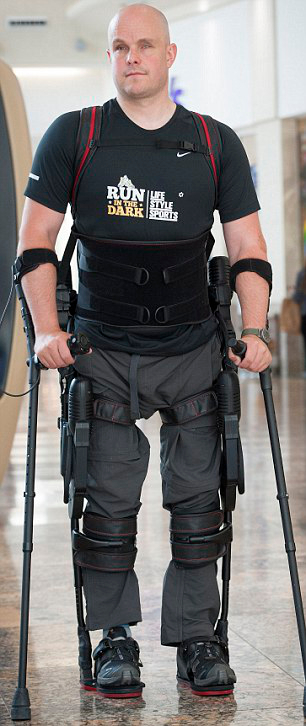Exciting step for mechanical exo-suit

In an exciting breakthrough at the intersection of medical science and engineering, Irish man Mark Pollock has become the first person with complete paralysis to regain enough control to use a mechanical exoskeleton unaided.
The 39-year-old from Northern Ireland was paralysed from the waist down after falling two storeys out a window in 2010.
Researchers from UCLA first treated Pollock with a series of electrical currents at selected sites in his spinal cord to reactivate neurons, before putting him through a series of physical therapy sessions.
Even this was a major achievement for Pollock, who “reported feeling tension and tingling in his lower limbs during the exercises”, according to the National Institute of Biomedical Imaging and Bioengineering.
He also began sweating on his lower back and legs - a phenomenon he had not experienced since his injury.
He was then fitted with the mechanical suit, complete with robotic controls developed by a California company called Ekso Bionics.
In a new paper presented at the proceedings of the 47th Annual International Conference of the IEEE Engineering in Medicine and Biology Society, the team said it found that “spinal-cord stimulation enhanced the level of effort that the subject could generate while stepping in the exoskeleton”.
“Based on this case study it appears that there is considerable potential” for this type of technology, their report says.
“It will be difficult to get people with chronic, complete paralysis to walk completely independently, but even if they don't accomplish that, the fact they can assist themselves in walking will greatly improve their overall health and quality of life,” V Reggie Edgerton, senior author and a UCLA professor of integrative biology, said in a statement.
“For people who are severely injured but not with complete paralysis there's every reason to believe they could improve even more with these types of interventions.”








 Print
Print